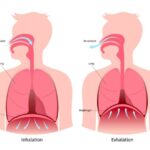It’s officially fall, and daylight savings will soon be coming to a close. Excited as we are to be getting an extra hour of sleep, how many of us have thought about how the loss and gain of an hour each spring and fall affects our health? Studies show there is an increase of up to 24% of heart attacks on the Monday after daylight savings begins in March. Interestingly enough, the risk of heart attacks drops by roughly 21% on the Monday after daylight savings ends in November. Why exactly is this? It’s unclear but experts are attributing the increase to the sudden shift in circadian rhythm. The pineal gland and sunlight help regulate this rhythm and it affects cortisol and melatonin. The pineal gland’s main purpose is to get information about the light-dark cycle from the environment and relay this information to produce and secrete melatonin. For those who are already vulnerable to heart disease, this particular disruption to the body’s internal clock and circadian rhythm can be enough to throw the body off balance. Having a regular sleep schedule is important for our body’s typical function including hormone regulation, liver function, and immune support. Going to bed at a consistent time is just as important as how long we sleep.
The process of turning our clocks forward started during World War I with the purpose of conserving energy and fuel by decreasing use of artificial light. It is still a common practice and incorporated in about 70 countries to this day. An hour may seem insignificant and our bodies are designed to adjust. However, those small adjustments can come with consequences. The brain’s hypothalamus utilizes hormonal and chemical signals to sync time throughout our bodies. When we experience time change, our internal clock begins to compete with the time on our watches. Disruptions in our sleep can interfere with our ability to focus, our memory, and our ability to process information.

Here are some tips that can help in managing the time changes:
- Prepare by going to sleep 15-20 minutes earlier on the days leading up to Daylight Savings
- Avoid caffeine 5-7 hours before bed. It can take up to 10 hours for caffeine to completely clear out of the system
- Avoid alcohol 4-5 hours before bed. Alcohol before bed leads to restless sleep and increased snoring
- Limit blue light after 3pm (smart phones, television, fluorescent and LED lighting). Consider investing in a pair of blue light blocking glasses
- 10 minutes of sunlight in the mornings when the sun is low can help set your internal clock well
- Give yourself time to wind down. Try out a night time meditation or yoga practice
Most of these tips are beneficial to our health no matter what the time of year. Check out this other blog post on 10 simple steps to improve your sleep to find more easy tips to optimize your sleep. If you have cardiovascular dysfunctions, implementing the above especially the days leading up to daylight savings can make more of a difference than you think for just one hour of sleep!
References:
Can daylight saving time hurt the heart? Prepare now for Spring. Published August 16, 2021. Accessed October 6, 2022.
An hour at what cost? The harmful effects of Daylight Savings. WebMD. Published November 5, 2021. Accessed October 6, 2022.
Daylight Saving Impacts the Timing of Heart Attacks. American College of Cardiology. Published March 29, 2014. Accessed October 6, 2022.






